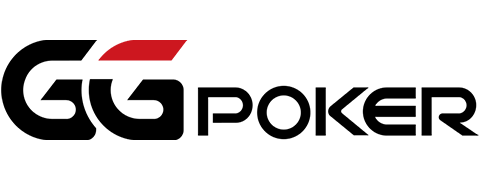We've been following Daniel Negreanu's 2024 tips for winning and we are now onto the 3rd installment.
In this hand, the GGPoker ambassador is up against Smiljkovic in the PGT Last Chance Event #1.
Aside from strategy, Daniel's also been talking a lot about the 2024 WSOP schedule, and his beef with Matt Berkey over Jonathan Little. There's a lot to keep track of.
Heads-Up Against Smiljkovic
All right, moving on with the series, we're finally heads up.
We're up against Smiley, and I think he starts with a chip lead here—a little lead, nothing crazy. We're still in it.
He has a lead for a while, we're jabbing, and I'm hanging tough. You never say quit in these heads-up tournaments. Like, even if you're down 4-to-1, all it takes is one double up and, you're back in it.

Going to limp-call here on the button with the . Daniel Smiljkovic has the with the blinds at 75K/150K and a 150K big blind ante.
I limp the button with the . Very important to know when you play with a big blind ante, you must limp the button a lot. You cannot be folding on the button; you're essentially always getting a good price to call. And because of that, you have to call a lot of your trash, which means you have to trap more as well, right? Because overall, let's say, for example, if your range was the top 80%, well, now it's a full 100%. So you're going to have a lot of the bottom end, like offsuit and stuff like that, that you're going to be limping with as well.
So, you protect that by also trapping with some of the better hands. This one's right in the middle; it's kind of a marginal. It's heads-up, I have a , I'm going to go ahead and limp.

Smiljkovic, he raises to 500k, a little over 3-bet with suited.
Now, why is Smiley doing this with one of the worst hands?
Theory would dictate that in these spots, you want to be pretty polarized. So he's going to be doing this with his strongest hands, and then he's going to do it with hands that don't play well preflop or postflop that he just wants to win with now. So he feels like, for two big blinds here, he has a better chance of doing better this way than he would trying to catch a flop pair, then fighting for it and check-folding.

So he takes the initiative with the bottom trash of his range and then, of course, the stronger hands. The middle stuff probably is where he's going to be doing a lot of checking back.
With against this size, again getting a very good price in position, two cards higher than an , I just call and see a flop.
To The Flop
Well, that flop comes , with two and one .

We don't flop anything, but we still got the high.
As we know, he's going to be raising the top and the bottom of his range, so we're still ahead of the bottom, right? You know, we're still ahead of the deuce-fours—well, not the , but the , or whatever the case may be.
So he checks and I decide to take a free one here. Again, I think I have some showdown value with queen high. I'd also probably be checking some combinations here. I would check a here a decent amount, so don't have to c-bet here 100% of the time. I elect to check.
The Turn
Now the turn card is the , and now there are two flush draws.
It is a very dynamic board; the straight potential is already there, the two flush draws, and whatnot.

Dicey spot. He checks over to me, and now I've got queens, right? So the question is, do I want to value bet my hand, and if so, what am I targeting? What worse hands call? Do I want to value bet against draws and sort of charge them and deny some equity? But possibly, do I want to bet and get check-raised here? Definitely not.
If I'm betting here, I probably am folding to check raises most of the time. So one of the ways in which you can avoid putting yourself in this tough decision is to check back on the turn and then on the river, you know, reassess the river situation.
The River
The river is the , so now the pairs, there's three there. I do have the , and that's relevant here. So I block some flushes; I block and, you know, goofy stuff like that that he could have. He checks again. Well, at this point, I'm pretty close to the top of my range, right? Sure, I could have a flush, but I think maybe a flush is likely to bet flop, maybe turn some of the bluffs or whatnot.
So really, that pair is about as good as I'm going to have. Sometimes I will have a and I can check back on the turn to trap.

The question now is, how much do I want to bet and why? Well, the pot has 1.15 million in it, and I'm going for what looks like a meaty bet, but it's still less than half pot. I bet 450,000.
Now, what does that bet represent? That bet represents I could have a , I could have a , I could have s, I could have bluffs. Figure out all the bluffs you could have there, you know, I could have , I could have , a whole bunch of missed nothings that just decided to bluff now. So there are plenty of bluffs here, and I'm pretty much at the top of my value. Maybe a is thin for this size because the question now you have to ask yourself, is what are you targeting? What are you hoping to get called by?
With this bet size, I'm hoping to get called by -high, I'm hoping to get called by a , I'm hoping to get called by a . I'm hoping to get called by maybe hands like or . Like, he could still easily have those hands in this spot. He did raise preflop, and as we said, we're polarized in these spots, right? Some of the better hands, some of the trash. If he has or , a flop is one that he very well may check, and then on a turn, he very well may check that again.
So we're targeting , , , any sort of pocket pair, a —all these types of hands—and we're giving them a pretty darn good price to do so. The question is, you know, can you bet bigger in these spots and balance that? Maybe. For me, I really like the size here.

I go for 450,000, and he makes the call. We get the payday. And notice, had I bet the turn, I probably bet about the same, 450,00, but then I wouldn't have followed it up on the river. So as it turns out, two things happen:
- One, I didn't risk losing the pot by a check-raise, right?
- Two, I didn't really end up losing any value because I picked the turn bet, or the size that I was going to probably bet on the turn, and picked it up on the river anyway.
So sometimes, on dynamic boards, you know, a lot of people have the misconception of like, "Oh, I got to protect my hand, there are so many draws out there," but you also have to have some strong hands in your check-back range. And protecting your hand, those are not terrible boards to do that with. Good players, when there are a lot of potential combo draws there, they might check-raise you with a combo draw.
Let's say he has a gutshot and flush draw or something like that; he might turn that into a bluff. And then what do you do with ? You're bloating a pot, you're making it big to deny equity in a spot where instead, what you can do is you can check back that turn with some of your stronger hands, maybe pick up value on the river, maybe protect yourself too sometimes when you're beat. Because again, you could still have a here, you could still have us beat in a lot of different ways.
Just because you have a doesn't mean you win because it's heads-up poker.

So a few lessons in that one, I think: protecting your check-back range, protecting against being blown off the pot, making sure that you get value, and figuring out what size makes the most sense for the range you're trying to represent as well as the range you're trying to target.


















